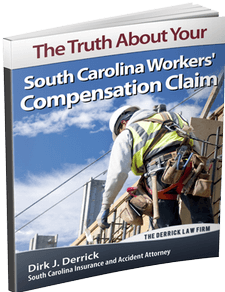Despite the establishment of these guidelines, forklift accidents continue to occur in the workplace on a regular basis.
How Forklift Accidents Happen
Forklift-related accidents take place each year in the manufacturing, warehousing, construction, transportation, mining, agriculture, and utilities sectors. Some common causes include the following:
An Employee Is Struck by a Forklift
Because of distraction, insufficient clearance on either side of the vehicle, a lack of proper signage, or vision blocked by cargo stacked too high, a forklift driver can knock down or run over a nearby employee. Knock-down mishaps can be prevented by setting up signs and barriers or using floor tape to designate work zones near the path of the forklift.
A Forklift Tips or Rolls Over
Forklifts have high centers of gravity and carry most of their weight in the rear. If a forklift is overloaded or unbalanced and the operator makes a sharp turn, the vehicle can easily roll or tip over, endangering the operator and nearby co-workers. This scenario is most likely to occur on uneven surfaces or inclines. Obeying speed limits, turning slowly, not stacking cargo too high, and observing the vehicle’s load capacity can help to prevent rollovers.
An Operator Falls From the Vehicle
Failure to use a safety belt, driving recklessly, or leaving the cab and standing on the elevated fork can result in an operator falling from the forklift. Such accidents can be prevented by using seat belts and guardrails and not standing on the fork of the vehicle.
Cargo Falls From a Forklift
If the cargo on a forklift is unbalanced, unstable, uncentered, improperly loaded, or not secure, it can shift and fall while the vehicle is in motion, especially if the operator drives too fast or turns too sharply. This kind of accident can cause a catastrophic injury or a fatality when a very heavy load falls off the forklift and crushes an employee. Loading the vehicle properly, not carrying unbalanced loads, slowing down, tilting the mast backward, and making sure the fork of the vehicle is not bent can reduce the likelihood of a falling-cargo mishap.
Lack of Proper Training
Formal training and OSHA certification are required for all forklift operators. Re-certification is required every three years. Employers who try to save money or time by skimping on driver training run the risk of serious accidents in the workplace.
Blocked View
Because a forklift carries its cargo on the fork in front of the vehicle, tall loads can obscure the driver’s vision and create blind spots where there might be co-workers or obstacles. Not carrying tall loads, driving slowly, and using a spotter to accompany the forklift and advise the driver of blind spot dangers can reduce the chance of blocked vision mishaps.
Mechanical Failure
Worn-out tires, bad brakes, faulty hydraulic lifting equipment, or leaking hoses or valves can result in a forklift malfunction that causes an accident. A design or manufacturing flaw can also affect the operation of the forklift and cause a mishap. Regular inspections, proper maintenance, and refusal to use a forklift with mechanical problems can reduce the chance of injury.
Forklift Accident Injuries
Because of the size and weight of a forklift and its cargo, the accidents listed above tend to cause serious injuries. Victims of workplace forklift accidents suffer broken bones, whiplash, sprained joints, strained muscles, repetitive stress injuries, spinal cord damage, paralysis, concussions, burns, and traumatic brain injuries (TBIs). Such injuries often lead to high medical bills and significant time off work for victims.
Workers’ Compensation for Forklift Accident Injuries
If you sustain a forklift accident injury on the job in Horry County, you should be able to file a claim for workers’ compensation benefits to cover your medical expenses and two-thirds of your lost wages. If your injury requires emergency care, go to the nearest medical facility for treatment. Once your condition is stable, report your injury to your employer and file your claim with the South Carolina Workers’ Compensation Commission (SCWCC) by submitting Form 50 from the SCWCC website.
See a physician approved by your employer’s workers’ comp insurance company and follow that doctor’s orders to the letter. Retain receipts and other documentation of your medical treatment. Although the SCWCC allows you 90 days to report your injury and two years to file your claim, you should do both as soon as possible. Any delay on your part can damage your claim and hurt your chances of collecting fair benefits. If your injuries are serious or you encounter any resistance from your employer or the insurer, consult a workers’ comp lawyer for advice and guidance.
Third-Party Lawsuits
If your company subscribes to workers’ comp, as most South Carolina employers do, you typically cannot sue your employer over a work-related accidental injury. In some cases, however, a third party not employed by your company could bear partial or complete responsibility for your injury. In such a case, you might have grounds for a third-party personal injury lawsuit. If, for example, the forklift malfunctioned due to a design or manufacturing flaw, you could possibly sue the manufacturer.
If a mechanic or repair service failed to maintain the forklift properly and indirectly caused your accident, that party might bear some responsibility for your injuries. A successful personal injury suit against a third party could enable you to recoup the one-third of your lost wages that workers’ comp does not pay and compensate you for pain and suffering which workers’ comp does not cover. An experienced workers’ comp attorney can evaluate your case and help you to file a workers’ comp claim as well as a third-party suit.

.jpeg) Forklifts are small industrial trucks that have been widely utilized in several different industries for many years. Although very useful in the moving and stacking of heavy objects, forklifts sometimes cause accidents that injure both operators and other employees in the workplace.
Forklifts are small industrial trucks that have been widely utilized in several different industries for many years. Although very useful in the moving and stacking of heavy objects, forklifts sometimes cause accidents that injure both operators and other employees in the workplace.


